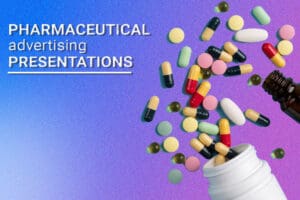Pharmaceutical Advertising Presentations
Introduction
Pharmaceutical advertising presentations play a crucial role in promoting and educating the target audience about various medications and healthcare products available in the market. These presentations are designed to be informative, persuasive, and compliant with industry regulations. In this document, we will explore the key elements that should be included in pharmaceutical advertising presentations, along with some best practices to ensure their effectiveness.
1. Purpose of Pharmaceutical Advertising Presentations
The primary purpose of pharmaceutical advertising presentations is to raise awareness about specific medications and healthcare products. These presentations aim to educate healthcare professionals, patients, and other stakeholders about the benefits, indications, and safety considerations of the advertised products. Additionally, they serve as a platform to highlight the unique features and competitive advantages of the pharmaceutical company’s offerings.
2. Target Audience
Pharmaceutical advertising presentations are tailored to specific target audiences, which may include healthcare professionals, such as doctors, nurses, and pharmacists, as well as patients, caregivers, and other relevant stakeholders. It is essential to understand the audience’s needs, preferences, and level of knowledge to create presentations that effectively convey the intended message.
3. Content Structure
A well-structured pharmaceutical advertising presentation should include the following elements:
- Introduction: Begin the presentation by introducing the pharmaceutical company, its mission, and its commitment to improving healthcare outcomes. This section should also provide an overview of the advertised product and its key features.
- Indications: Clearly explain the medical conditions or diseases for which the product is indicated. Emphasize the product’s efficacy in treating these conditions and any unique benefits it offers compared to alternatives.
- Mechanism of Action: Describe how the product works at a molecular or physiological level to achieve its therapeutic effects. Use visual aids, such as diagrams or animations, to help the audience understand the mode of action.
- Clinical Data: Present the results of relevant clinical studies or trials that demonstrate the safety and efficacy of the product. Highlight any statistically significant findings or outcomes that support the product’s claims.
- Safety Considerations: Discuss the potential side effects, contraindications, and precautions associated with the product. It is crucial to provide accurate and balanced information to enable healthcare professionals and patients to make informed decisions.
- Dosing and Administration: Explain the recommended dosage, route of administration, and any specific instructions for using the product correctly. Include information about dose adjustments for different patient populations, if applicable.
- Competitive Advantage: Differentiate the advertised product from competitors by highlighting its unique features, such as improved efficacy, safety profile, or patient convenience. Provide evidence or real-life examples to support these claims.
- Conclusion: Summarize the key points covered in the presentation and reiterate the benefits and value of the advertised product. Encourage the audience to further explore the product or seek additional information from the pharmaceutical company.
4. Best Practices for Pharmaceutical Advertising Presentations
To create effective pharmaceutical advertising presentations, consider the following best practices:
- Use clear and concise language: Avoid jargon and complex terminology that may confuse or alienate the audience. Present information in a straightforward and accessible manner.
- Visual aids: Incorporate visually appealing and informative slides or multimedia elements to enhance audience engagement and understanding.
- Compliance with regulations: Ensure that the presentation adheres to legal and ethical guidelines set by regulatory authorities, such as the Food and Drug Administration (FDA) or the International Council for Harmonisation of Technical Requirements for Pharmaceuticals for Human Use (ICH).
- Credible sources: Use reliable and up-to-date sources of information, including peer-reviewed journals, clinical guidelines, and reputable medical literature.
- Continuous improvement: Regularly update and refine the presentation based on feedback, emerging research, and changes in the healthcare landscape.
Conclusion
Pharmaceutical advertising presentations are essential tools for educating and informing healthcare professionals and patients about medications and healthcare products. By following a well-structured approach, incorporating best practices, and ensuring compliance with regulations, these presentations can effectively convey the benefits and value of the advertised products, leading to improved patient outcomes and informed decision-making.

